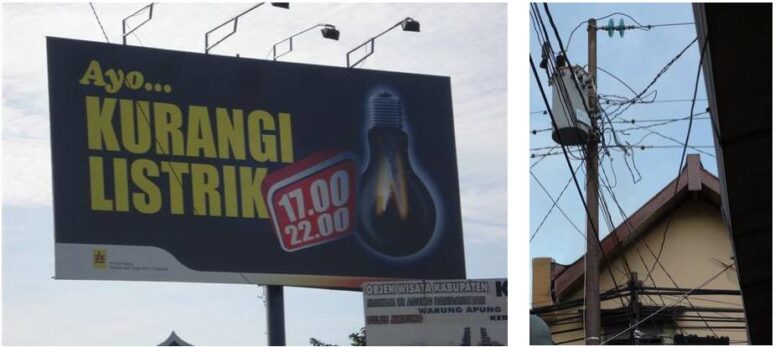Economic situation in the Sukarno era
In the first years after independence, agricultural production was still of paramount importance for the Indonesian economy. Nevertheless, prestige projects (such as the Conference of the Non-Aligned States in Bandung in 1955) came before targeted efforts to build up the economy.
Economic development in the Suharto era
The economic turnaround came under Suharto when he finally took power as president in 1967.
The framework conditions for economic development included, among other things, the facilitation of foreign investments, a financial policy that got inflation under control, the expansion of infrastructure and the promotion of food production. With international help, numerous development programs have also been successfully implemented.
Opening the country to foreign capital and drawing up five-year plans were the main drivers of economic consolidation.
Enormous riches in oil and natural gas secured the foreign exchange income that was necessary for the gradual development of the country.
Suharto’s successes for economic development are undisputed. Indicators (such as GNP) point to steady economic growth during Suharto’s reign. Among other things, he achieved self-sufficiency with rice and a falling quota of people living below the poverty line.
The diversification of economic sectors and state deregulation measures to create an investor-friendly climate were important foundations of state economic policy in Suharto’s reign. An annual labor force that is growing by 2 million people and cheaper production countries such as China and Vietnam are important reasons that led to this economic policy.
Effects of Suharto’s economic policy
According to ethnicityology, the essential basic economic data seemed to indicate sustainable success for the economic development of Indonesia, especially since the late 1980’s. Nevertheless, there was criticism, increasingly directed against the growing economic influence of Suharto’s family in the early 1990’s. In the meantime, the large domestic market, falling poverty, increasing technical skills of the Indonesian workforce and government investment facilitation led to ever larger flows of capital. These capital flows were one of the main triggers for the onset of economic depression in the context of the Asian crisis of 1997.
Economic crisis 1997/1998 and its consequences
While in July 1997 one received around 2,700 rupiah for one dollar, the exchange rate rose in 1998 to up to 15,000 rupiah. The prices for all imported goods and domestic products now rose, while wages remained at the old level. In a short time real per capita income had fallen by three quarters. The financial sector was particularly hard hit. There, the ineffective banking supervision took massive revenge.
The causes are extremely complex: State liberalization measures at the end of the 1980’s and the beginning of the 1990’s were partly responsible. At that time, many major Indonesian entrepreneurs had taken their chance and founded their own house banks with only small capital contributions. With these house banks they then used themselves with large loans, for which they – relieved by opaque corporate conglomerates – had deposited embellished collateral. This created a great financial bubble of fictional capital.
Due to the rapid decline in the rupiah, the IMF has now decreed a reduction in the circulation of money. Therefore, the Indonesian central bank raised the key rate from 20% to 70.8%. As a result, many borrowers were unable to repay their loans. The result was the collapse of many banks. Several factories and other businesses had to close and unemployment rose dramatically within a few months. Around 40 million people were affected. The supply situation of the poor sections of the population became increasingly critical.
In the big cities, especially in May 1998, bloody unrest broke out, the main victims of which were the economically powerful Chinese minority. Not only did many rich Chinese transfer their money abroad – many of the favorites of the old regime also transferred billions abroad. Foreign investors also fled in droves in this uncertain situation.
Attempts to get the financial crisis under control through grants from the IMF failed because the IMF demanded far-reaching reforms, such as the privatization of many state-owned companies, the release of the rupiah rate, liberalization measures in trade, the abolition of monopolies and cartels and serious anti-corruption measures. However, since a large part of the ruling elite was involved in cartels, monopolies and corruption, these demands had no chance of serious implementation from the start.
After the fat years through which Indonesia wanted to make the leap to become an industrial nation, the country was caught in the Asian crisis all of a sudden before ruin. Suharto, the father of development and economic success, couldn’t get the crisis under control and had to abdicate.
Poverty
In the course of the 1997/1998 Asian crisis, poverty in the country worsened drastically. At that time, around 48% of the population had to get by on less than US $ 1.25 per day – now it is only 18%. Even more dramatic values were achieved regionally.
The average monthly wage in 2018 was € 179.
But Indonesia still has a massive problem of poverty. According to World Bank standards, around 50% of Indonesians are considered poor, although significantly higher values can be achieved depending on the region. The sharp rise in food prices since 2008 has exacerbated the situation of the poor. 11.7% lived below the national poverty line in 2017.
Poverty, however, continues to vary greatly from region to region, as recent poverty studies show. The richest provinces therefore have a budget more than ten times higher than that of the poorest provinces.
The inequality is getting bigger, because on the other hand there are also more and more rich Indonesians. Indonesia currently has around 40,000 dollar billionaires and, according to the Forbes 2018 list, a total of 30 dollar billionaires. The number of dollar billionaires has more than doubled in the last 10 years. The wealth of the 40 richest people in Indonesia rose to the Forbes list alone between 2015-2017 of 92 billion US $ 119.2 billion US $.
